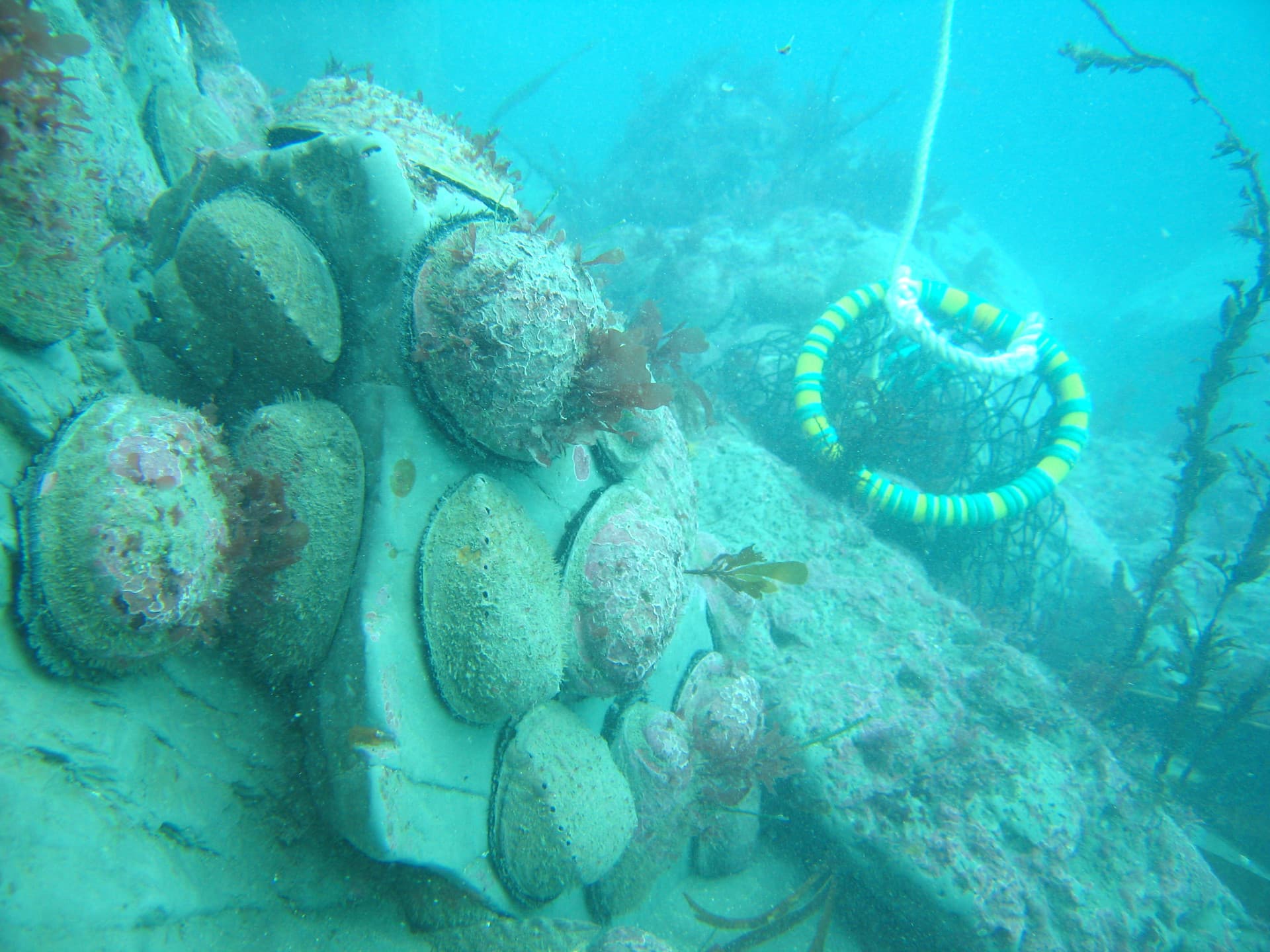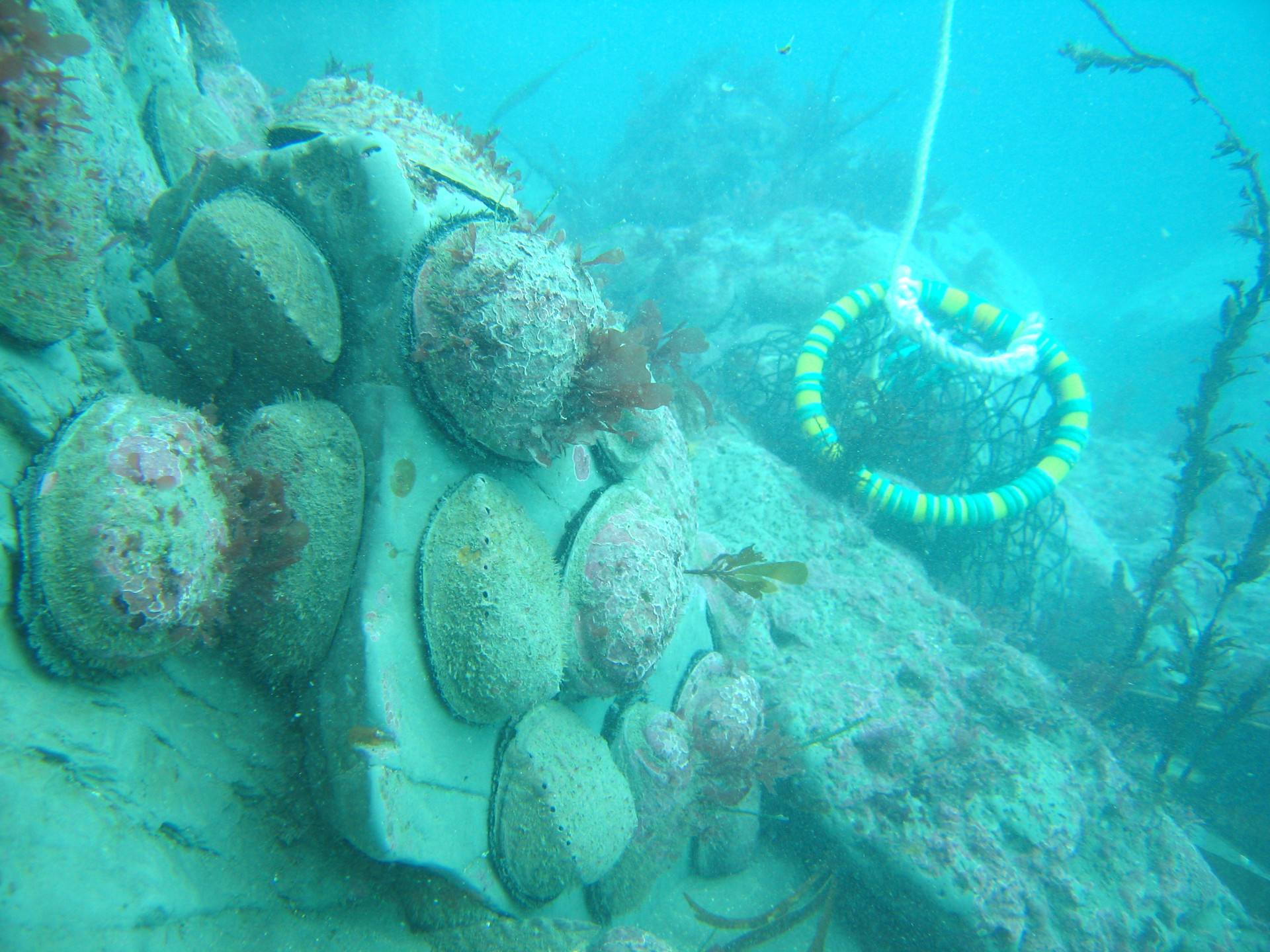

Posted on Monday 11 April 2022
Researchers from the Sustainable Seas National Science Challenge are working with an east coast pāua fishery to identify and assess the risks being created by climate change and other environmental stressors on the industry, and what they mean for quota owners, divers, and the communities the industry supports.
The Upholding the value of pāua quota project aims to show where industry, local and central government communities, iwi, and other stakeholders will need to invest to mitigate the risks identified.
The research brings together recent advances in marine science and climate change knowledge with Māori pāua quota owners, sustainable finance, and pāua fishery management. The project extends along the east coast of Te Ika-a-Māui from Southern Hawke’s Bay through the eastern border of Manawatū-Whanganui to Wairarapa.
The project will characterise the PAU2 fishery and build quantitative and qualitative risk analysis tools. It will also profile environmental risks that pertain to the fishery, and document key response strategies essential to reducing those risks.
Project co-leader Katherine Short, from project partner Terra Moana Ltd, describes the māhi as bringing together interdisciplinary knowledge to build new ways of shaping investments to respond to environmental challenges. Short says the project is about defining and understanding future challenges, so they can be planned for and mitigated. Responses could include reducing sedimentation and building resilience to climate change.
“We’re translating the science into business impact assessment so that the seafood industry can consider appropriate options. This improves the clarity for everybody about why investment is needed in mitigation and adaptation responses, the scale of those responses, and who pays how much to deliver them.”
Iwi hold a large portion of the commercial pāua quota in PAU2, so this project is also about understanding their role in protecting the taonga species.
Project co-leader Tony Craig, also from Terra Moana Ltd, who’s been in the industry more than 30 years, says the idea is to inform owners, investors, and lenders in the financial sector about what can be done to protect their interests over coming decades.
“This project is about looking at those factors that would influence risk and the level of information you need to make a sensible decision about how to protect one’s investment,” says Craig.
According to Craig, pāua is the ‘perfect animal’ to use in the study as they stay in the same habitat, unlike other marine animals. “It's very much like a canary in the coal mine. It can't move. We're going to see the impacts to it quicker than anything.”
Storm Stanley chair of the Pāua Industry Council agrees: “We know a lot about pāua, the biology, where they exist, and have a fair idea of where the climate change threats come from. It’s a very good case study, and certainly a useful one for financial modelling.”
Stanley entered the industry in the 1980s, like many as a keen diver who wanted to make a living out of being in the ocean every day. Things like climate change and other environmental stressors were far from his mind, but that’s not the case today.
“We have to face facts that change is coming, and we need to be able to adapt and mitigate the impacts if we can. The pāua industry is interested in the outcome of this project, we’ll be very interested to see what the bankers who are involved will make of it.”
Dean Spicer, Head of Sustainable Finance at ANZ Bank, is also part of the research team. As one of the largest lenders into the seafood sector ANZ is committed to supporting the sustainability of the country’s fisheries. Spicer says the hope is that it will improve the bank’s understanding and ability to measure and model risks, so the bank and quota owners can see those risks and adapt if necessary.
“We’re looking at how the data captured can be modelled from a financial modelling perspective – so what is the data telling us, and how can we model it so it’s useful for the businesses who are going to be impacted?
“Our interest is trying to support the businesses who own the quota, and the wider community, to ensure they’re thriving and have ongoing sustainability.”
